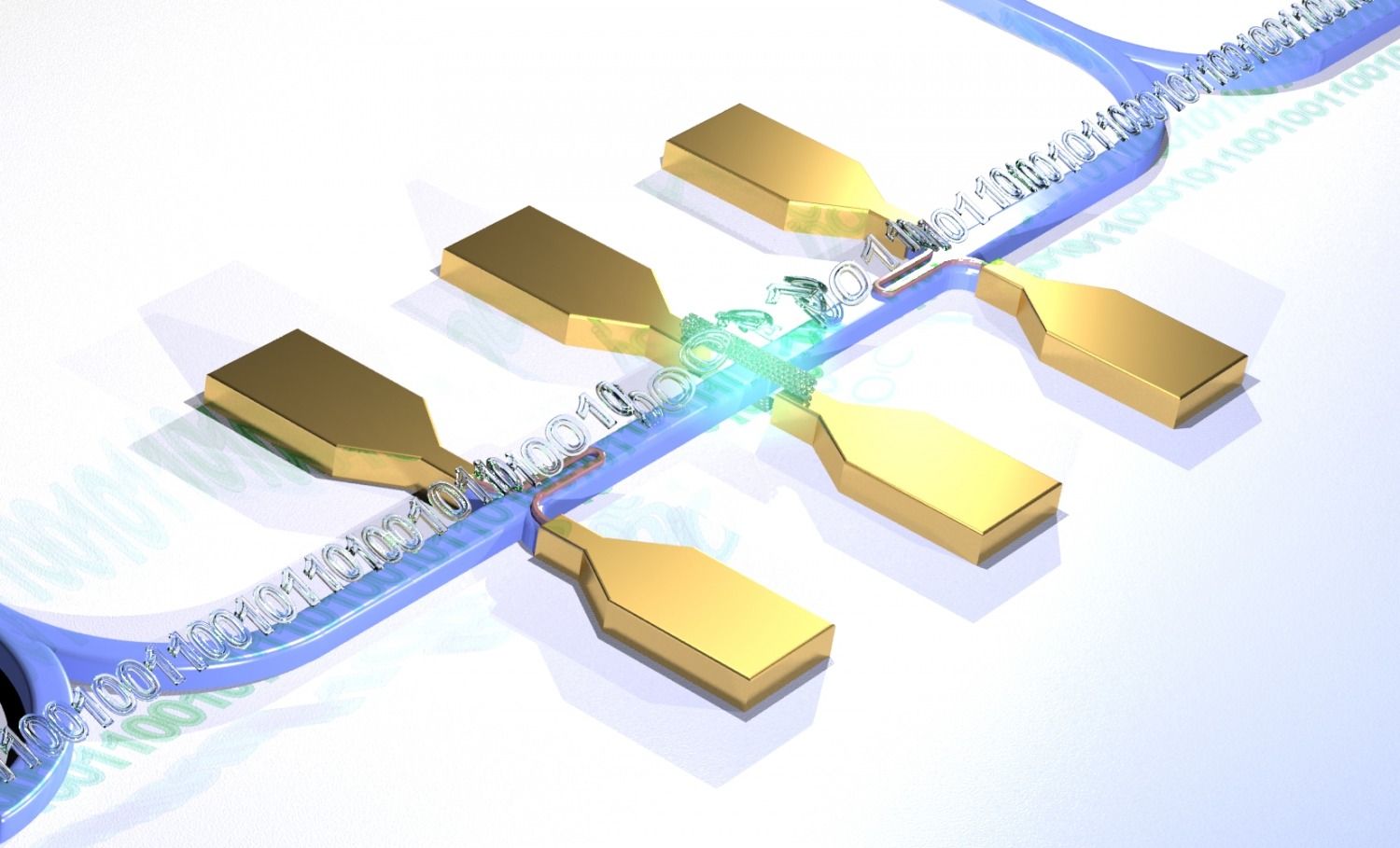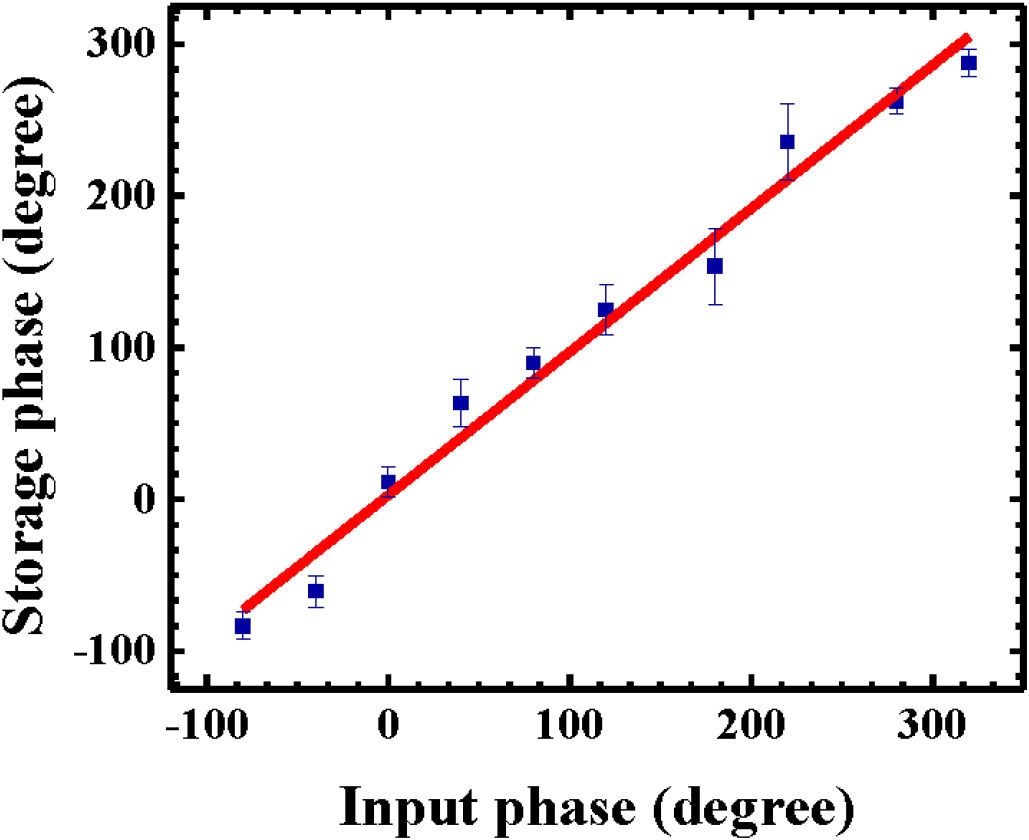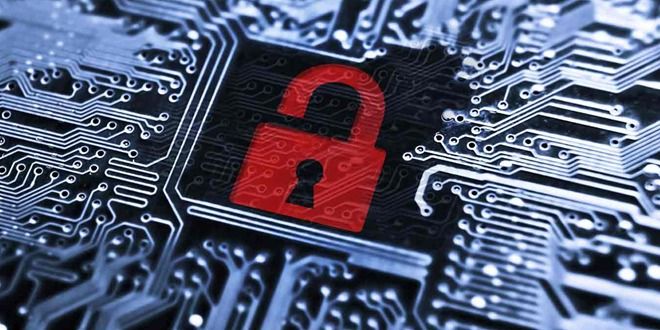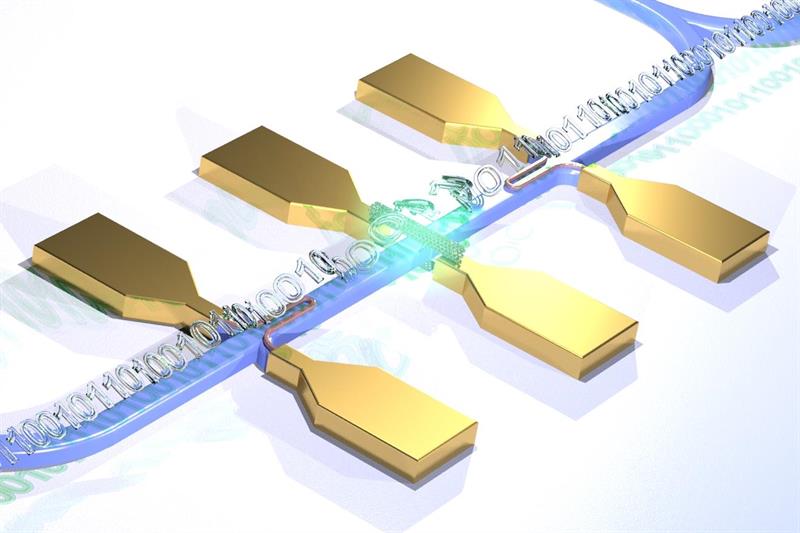Archive for the ‘quantum physics’ category: Page 759
Sep 29, 2016
Stopping Light: Physicists Move Quantum Computers Closer to Reality
Posted by Karen Hurst in categories: computing, engineering, particle physics, quantum physics

Hmmm; like the graphic reminds of one of my posts.
In Brief.
Continue reading “Stopping Light: Physicists Move Quantum Computers Closer to Reality” »
Sep 29, 2016
Quantum computing breakthrough: Israeli scientists invent cannon for entangled photon clusters
Posted by Karen Hurst in categories: computing, quantum physics
Scientists have developed a device that can guarantee producing an endless sequence of entangled photons.
Sep 29, 2016
Will quantum teleportation defeat quantum decryption?
Posted by Karen Hurst in categories: computing, encryption, finance, quantum physics, security
Nice article; however, not sure if the author is aware Los Alamos already has a quantum net as well as some Europe banks have the capabilities and 4 months ago it was announced that a joint effort by various countries from Europe, Asia, etc. have come together to re-engineer the Net infrastructure with QC technology…
Maybe the quantum will giveth what the quantum taketh away… at least when it comes to secure transmissions.
There’s been much speculation that emerging quantum computers will become capable of breaking advanced public key cryptography systems, such as 2048-bit RSA. This might leave encrypted data transmissions exposed to anyone who happens to own such a quantum computer.
Continue reading “Will quantum teleportation defeat quantum decryption?” »
Sep 28, 2016
First quantum photonic circuit with an electrically driven light source
Posted by Klaus Baldauf in categories: computing, encryption, nanotechnology, quantum physics
Whether for use in safe data encryption, ultrafast calculation of huge data volumes or so-called quantum simulation of highly complex systems: Optical quantum computers are a source of hope for tomorrow’s computer technology. For the first time, scientists now have succeeded in placing a complete quantum optical structure on a chip, as outlined Nature Photonics. This fulfills one condition for the use of photonic circuits in optical quantum computers.
“Experiments investigating the applicability of optical quantum technology so far have often claimed whole laboratory spaces,” explains Professor Ralph Krupke of the KIT. “However, if this technology is to be employed meaningfully, it must be accommodated on a minimum of space.” Participants in the study were scientists from Germany, Poland, and Russia under the leadership of Professors Wolfram Pernice of the Westphalian Wilhelm University of Münster (WWU) and Ralph Krupke, Manfred Kappes, and Carsten Rockstuhl of the Karlsruhe Institute of Technology (KIT).
The light source for the quantum photonic circuit used by the scientists for the first time were special nanotubes made of carbon. They have a diameter 100,000 times smaller than a human hair, and they emit single light particles when excited by laser light. Light particles (photons) are also referred to as light quanta. Hence the term “quantum photonics.”
Continue reading “First quantum photonic circuit with an electrically driven light source” »
Sep 27, 2016
Diamond storage units for photons in quantum communication
Posted by Karen Hurst in category: quantum physics
This doesn’t surprise me at all given how we can leverage synthetic diamonds and their crystal formations for light networks, QC, and now storage.
Nuclear spins in diamond can store photonic information with high fidelity and have coherence times that exceed 10s, making diamond potentially useful as a node in quantum communications.
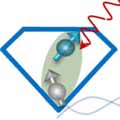
Continue reading “Diamond storage units for photons in quantum communication” »
Sep 27, 2016
Unbreakable Encryption is One Step Closer to Becoming Usable Technology
Posted by Karen Hurst in categories: encryption, quantum physics
The University of Rochester has begun work on what they call a Quantum Enigma Machine. This new machine is said to be responsible for unbreakable encryption. It will also shorten encryption keys, and make data interception much more difficult than it already is.
American Mathematician Claude Shannon came up with a binary system that would allow him to transmit messages under three stipulations: the key is random, only used once, and it has to be as long as the message itself is.
Recent studies show that scientists are theorizing that they could send a message with unbreakable encryption with a key that is much shorter than the message itself. Their theory may soon become fact as researchers have developed the quantum enigma machine.
Continue reading “Unbreakable Encryption is One Step Closer to Becoming Usable Technology” »
Sep 27, 2016
KIT team develops ‘quantum optical structure on a chip
Posted by Karen Hurst in categories: computing, nanotechnology, particle physics, quantum physics
Researchers at the Karlsruhe Institute of Technology say they have developed a quantum photonic circuit with an electrically driven light source. Described as a ‘complete quantum optical structure on a chip’, the development is said to fulfil one condition for the use of photonic circuits in optical quantum computers.
“Experiments investigating the applicability of optical quantum technology have often claimed whole laboratory spaces,” said Professor Ralph Krupke. “However, if this technology is to be employed meaningfully, it must be accommodated on a minimum of space.”
The light source for the quantum photonic circuit is carbon nanotubes which emit single particles of light when excited by a laser. Because they emit single photons, carbon nanotubes are attractive as light sources for optical quantum computers.
Continue reading “KIT team develops ‘quantum optical structure on a chip” »
Sep 27, 2016
A Primer for Deterministic Thermodynamics and Cryodynamics
Posted by Otto E. Rössler in categories: engineering, existential risks, general relativity, particle physics, philosophy, quantum physics
A Primer for Deterministic Thermodynamics and Cryodynamics
Dedicated to the Founder of Synergetics, Hermann Haken
Otto E. Rossler, Frank Kuske, Dieter Fröhlich, Hans H. Diebner, Thimo Bo¨ hl, Demetris T. Christopoulos, Christophe Letellier
Abstract The basic laws of deterministic many-body systems are summarized in the footsteps of the deterministic approach pioneered by Yakov Sinai. Two fundamental cases, repulsive and attractive, are distinguished. To facilitate comparison, long-range potentials are assumed both in the repulsive case and in the new attractive case. In Part I, thermodynamics – including the thermodynamics of irreversible processes along with chemical and biological evolution – is presented without paying special attention to the ad hoc constraint of long-range repulsion.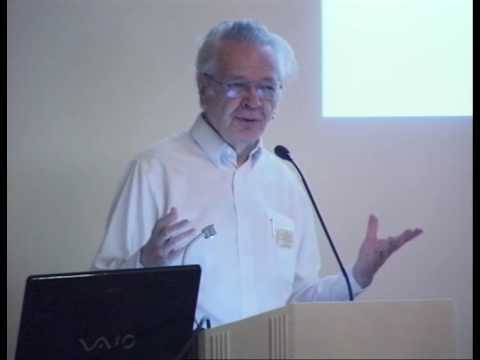 In Part II, the recently established new fundamental discipline of cryodynamics, based on long-range attraction, is described in a parallel format. In Part III finally, the combination (“dilute hot-plasma dynamics”) is described as a composite third sister discipline with its still largely unknown properties. The latter include the prediction of a paradoxical “double-temperature equilibrium” or at least quasi-equilibrium existing which has a promising technological application in the proposed interactive local control of hot-plasma fusion reactors. The discussion section puts everything into a larger perspective which even touches on cosmology.
In Part II, the recently established new fundamental discipline of cryodynamics, based on long-range attraction, is described in a parallel format. In Part III finally, the combination (“dilute hot-plasma dynamics”) is described as a composite third sister discipline with its still largely unknown properties. The latter include the prediction of a paradoxical “double-temperature equilibrium” or at least quasi-equilibrium existing which has a promising technological application in the proposed interactive local control of hot-plasma fusion reactors. The discussion section puts everything into a larger perspective which even touches on cosmology.
Keywords: Sinai gas, chaos theory, heat death, dissipative structures, second arrow, Point Omega, Super Life, paradoxical cooling, antifriction, paradoxical acceleration, Sonnleitner numerical instability, dilute-plasma paradigm, two-temperature equilibrium, ITER, MHD, interactive plasma cooling, McGuire reactor, Hubble law, Zwicky rehabilitated, Perlmutter-Schmidt-Riess wiggle, mean cosmic temperature, van Helmont, Lavoisier, Kant, Poincaré, double-faced Sonnleitner map. (August 26, 2016)
Continue reading “A Primer for Deterministic Thermodynamics and Cryodynamics” »
Sep 27, 2016
Creating antimatter via lasers?
Posted by Shane Hinshaw in categories: particle physics, quantum physics
Now, intriguing calculations from a research team at the Institute of Applied Physics of the Russian Academy of Sciences (IAP RAS), and reported this week in Physics of Plasmas, from AIP Publishing, explain the production and dynamics of electrons and positrons from ultrahigh-intensity laser-matter interactions. In other words: They’ve calculated how to create matter and antimatter via lasers.
Strong electric fields cause electrons to undergo huge radiation losses because a significant amount of their energy is converted into gamma rays — high-energy photons, which are the particles that make up light. The high-energy photons produced by this process interact with the strong laser field and create electron-positron pairs. As a result, a new state of matter emerges: strongly interacting particles, optical fields, and gamma radiation, whose dynamics are governed by the interplay between classical physics phenomena and quantum processes.
A key concept behind the team’s work is based on the quantum electrodynamics (QED) prediction that “a strong electric field can, generally speaking, ‘boil the vacuum,’ which is full of ‘virtual particles,’ such as electron-positron pairs,” explained Igor Kostyukov of IAP RAS. “The field can convert these types of particles from a virtual state, in which the particles aren’t directly observable, to a real one.”



